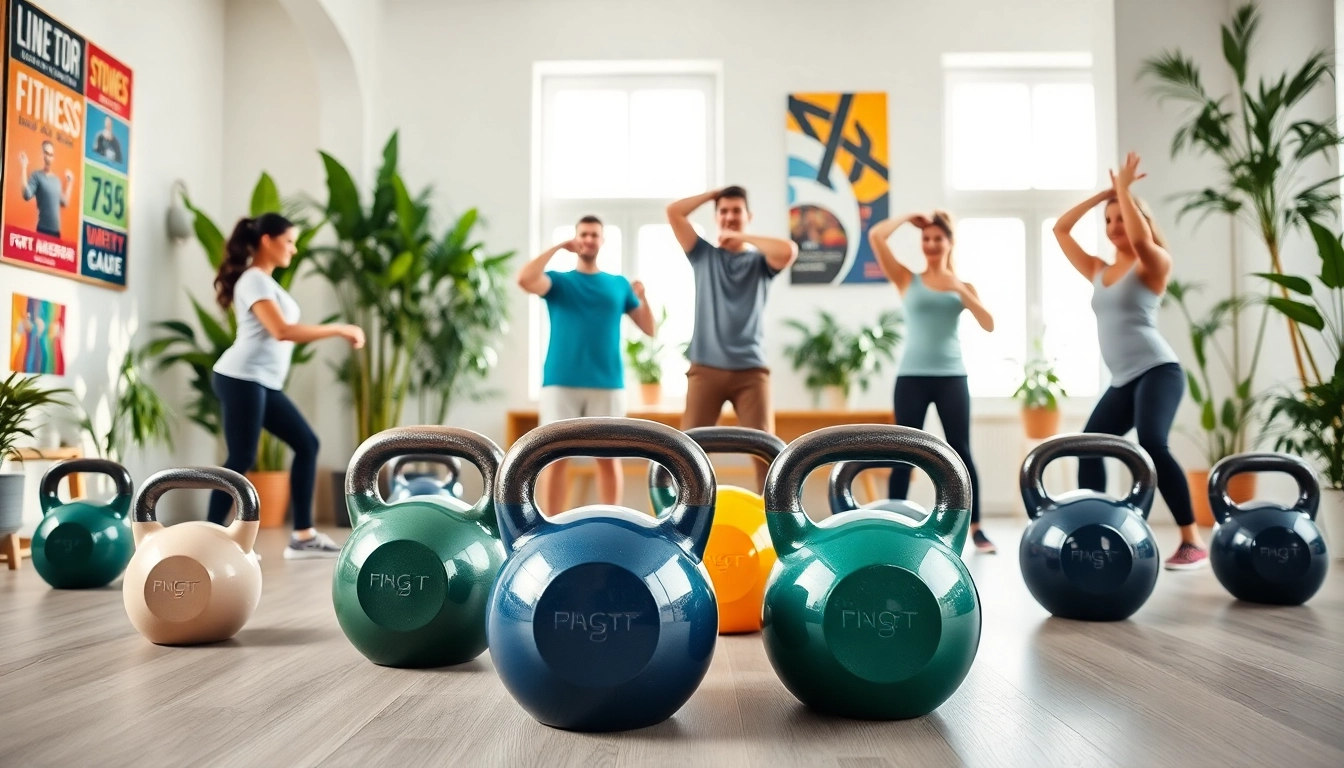Understanding Affordable Kettlebells for Home Gyms
Kettlebells have surged in popularity as an effective tool for strength training, cardio, and flexibility exercises. Ideal for home gyms, kettlebells offer versatility that can meet the needs of beginners and seasoned fitness enthusiasts alike. For those looking to build a home gym on a budget, affordable kettlebells for home gyms provide an excellent solution. This article will delve into the world of kettlebells, their benefits, and how to choose the right ones for your workout regimen.
What Are Kettlebells?
Kettlebells are cast-iron or cast-steel balls with a handle on top, originating from Russia in the 1700s. They are unique in their shape and design, allowing for a different type of movement than traditional dumbbells. The offset center of gravity of kettlebells makes them particularly effective in promoting balance, coordination, and core stability. They come in various weights, accommodating users of all fitness levels.
Benefits of Using Kettlebells
The use of kettlebells comes with numerous benefits:
- Full-Body Workout: Kettlebell exercises engage multiple muscle groups, providing an efficient full-body workout.
- Cardiovascular Health: The dynamic movements associated with kettlebell training can improve cardiovascular endurance and increase heart rate.
- Improved Strength and Endurance: Regular kettlebell training enhances strength capabilities and muscular endurance, particularly in the core, legs, and upper body.
- Enhanced Flexibility: Many kettlebell exercises promote better range of motion and flexibility.
- Convenient and Space-Saving: Kettlebells are compact and easy to store, making them perfect for home gyms.
- Versatile Training Options: A wide range of exercises can be performed using kettlebells, from swings to squats, making workouts more interesting.
Why Choose Affordable Options?
Investing in affordable kettlebells for home gyms makes financial sense for many fitness enthusiasts. Here are a few reasons why opting for budget-friendly options can be advantageous:
- Cost-Effectiveness: Affordable kettlebells allow you to save money without compromising on quality. You can build an effective workout setup without overspending.
- Accessibility: More accessible pricing means that individuals from various economic backgrounds can engage in strength training, promoting a healthier society overall.
- Learning Curve: If you are new to kettlebell training, starting with affordable options allows you to learn the technique without a significant financial commitment.
- Varied Weight Choices: You can afford to have different weights for different exercises, enhancing your workout without investing heavily in one high-cost item.
Key Features to Look For
Weight Variability
Kettlebells come in a range of weights, usually measured in kilograms or pounds. When selecting affordable kettlebells for home gyms, consider your current strength level and fitness goals:
- Beginners: Start with lighter weights (8-12 kg or 18-26 lbs) for learning proper techniques.
- Intermediate Users: Progress to 12-16 kg (26-35 lbs) for more challenging exercises.
- Advanced Users: Consider heavier kettlebells (16 kg and above) for strength training.
It can be beneficial to have a few different weights available to allow for more versatile training options.
Material and Build Quality
When looking for affordable kettlebells, the material and overall build quality are crucial:
- Cast Iron: Most kettlebells are made of cast iron, providing durability and strength.
- Coating: Look for kettlebells with a powder-coated finish for better grip and durability.
- Rounding: Ensure the kettlebells have a well-rounded and smooth surface to facilitate ease of use and safety during workouts.
Handle Design and Grip
The handle of a kettlebell significantly impacts its usability:
- Thickness: Choose a handle thickness that allows for a comfortable grip. A thicker handle may provide more resistance but can be challenging for beginners.
- Grip Texture: Look for kettlebells with textured handles that prevent slipping during intense workouts.
- Ergonomics: The handle should fit comfortably in your hand for various exercises, reducing the risk of blisters and enhancing performance.
How to Incorporate Kettlebells into Your Workout
Beginner-Friendly Exercises
If you’re new to kettlebells, starting with beginner-friendly exercises can help you develop the right techniques while building strength:
- Kettlebell Deadlift: This foundational exercise targets the hamstrings, glutes, and lower back. Stand with feet hip-width apart, kettlebell between your feet. Bend at your hips and knees to grasp the kettlebell and stand up straight, pushing through your heels.
- Kettlebell Swing: A dynamic full-body move that works your posterior chain (back, glutes, and hamstrings). Stand with your feet shoulder-width apart, swing the kettlebell between your legs and thrust your hips forward to propel it to shoulder height.
- Kettlebell Goblet Squat: Hold one kettlebell close to your chest and squat down. This variation helps with squat form and engages core muscles.
Intermediate and Advanced Routines
As you become more comfortable with kettlebells, challenge yourself with intermediate and advanced exercises:
- Kettlebell Clean and Press: This compound movement builds strength and coordination. Clean the kettlebell to your shoulder and then press overhead.
- Kettlebell Turkish Get-Up: A complex movement that improves mobility, stability, and strength. It involves transitioning from lying down to standing while holding a kettlebell above your head.
- Kettlebell Snatch: An advanced explosive exercise targeting multiple muscle groups. The kettlebell goes from the floor to overhead in one fluid motion.
Sample Workout Plans
Incorporating kettlebells into your workout routine can be straightforward. Here’s a simple weekly plan:
Sample Weekly Workout Plan
- Day 1: Full-Body Workout
- Kettlebell Deadlifts – 3 sets of 10 reps
- Kettlebell Swings – 3 sets of 12 reps
- Kettlebell Goblet Squats – 3 sets of 10 reps
- Day 2: Upper Body Focus
- Kettlebell Clean and Press – 3 sets of 8 reps per arm
- Kettlebell Rows – 3 sets of 10 reps
- Kettlebell Shoulder Press – 3 sets of 10 reps
- Day 3: Cardio and Core
- Kettlebell Swings – 5 rounds of 30 seconds on, 30 seconds off
- Kettlebell Russian Twists – 3 sets of 15 reps per side
- Kettlebell Turkish Get-Ups – 2 sets of 5 reps per side
- Day 4: Rest or Active Recovery
- Day 5: Lower Body Focus
- Kettlebell Goblet Squats – 4 sets of 10 reps
- Kettlebell Deadlift – 3 sets of 10 reps
- Kettlebell Lunges – 3 sets of 10 reps per leg
- Day 6: Full-Body Workout
- Kettlebell Snatch – 3 sets of 8 reps per arm
- Kettlebell Thrusters – 3 sets of 10 reps
- Kettlebell Russian Twists – 3 sets of 15 reps per side
- Day 7: Rest or Active Recovery
Safety Tips When Using Kettlebells
Proper Form and Technique
Proper form is crucial to avoid injuries and achieve effective results:
- Start Slow: Focus on mastering the correct techniques before increasing weight or intensity.
- Use a Mirror: Practicing in front of a mirror allows you to check your form and make adjustments as needed.
- Engage Your Core: Keeping your core engaged during kettlebell movements provides essential support for your spine and helps to prevent injury.
Avoiding Common Injuries
Although kettlebell training can be safe, it’s essential to be aware of some common injuries and how to avoid them:
- Lower Back Pain: Focus on proper hip hinge mechanics during kettlebell swings and deadlifts.
- Wrist Strains: Maintain a neutral wrist position; avoid excessive wrist flexion during exercises.
- Shoulder Injuries: Gradually increase weight and prioritize solid overhead stability before lifting heavier kettlebells.
Warming Up and Cooling Down
Prioritizing a proper warm-up and cool-down routine can enhance your kettlebell workout experience. Warm up dynamically with movements like arm circles, leg swings, and torso twists to prepare your body for training. Cool down with gentle stretching focused on the major muscle groups you engaged during your kettlebell workout to aid recovery and flexibility.
Where to Buy Affordable Kettlebells for Home Gyms
Local Retailers vs. Online Stores
Finding affordable kettlebells might involve a mix of both local and online shopping. Local retailers might have the benefit of immediate purchase and delivery, while online stores can offer a broader selection and competitive pricing. Consider checking both options to find the best deals and ensure you can physically inspect the quality if buying locally.
Understanding Price Ranges
Price ranges for kettlebells vary based on weight and material:
- Light Kettlebells: $15 – $30
- Medium Kettlebells: $30 – $60
- Heavy Kettlebells: $60 – $100+
Set a budget before shopping and recognize that higher costs don’t always equate to better quality.
Signs of Quality in Affordable Options
When purchasing affordable kettlebells, look for these signs of quality:
- Weight Consistency: Ensure that the kettlebell’s weight is accurate for safety and efficacy.
- Finish Quality: A smooth and well-finished surface indicates better manufacturing practices.
- Stability: The kettlebell should not wobble or be uneven, which can signal a manufacturing defect.



